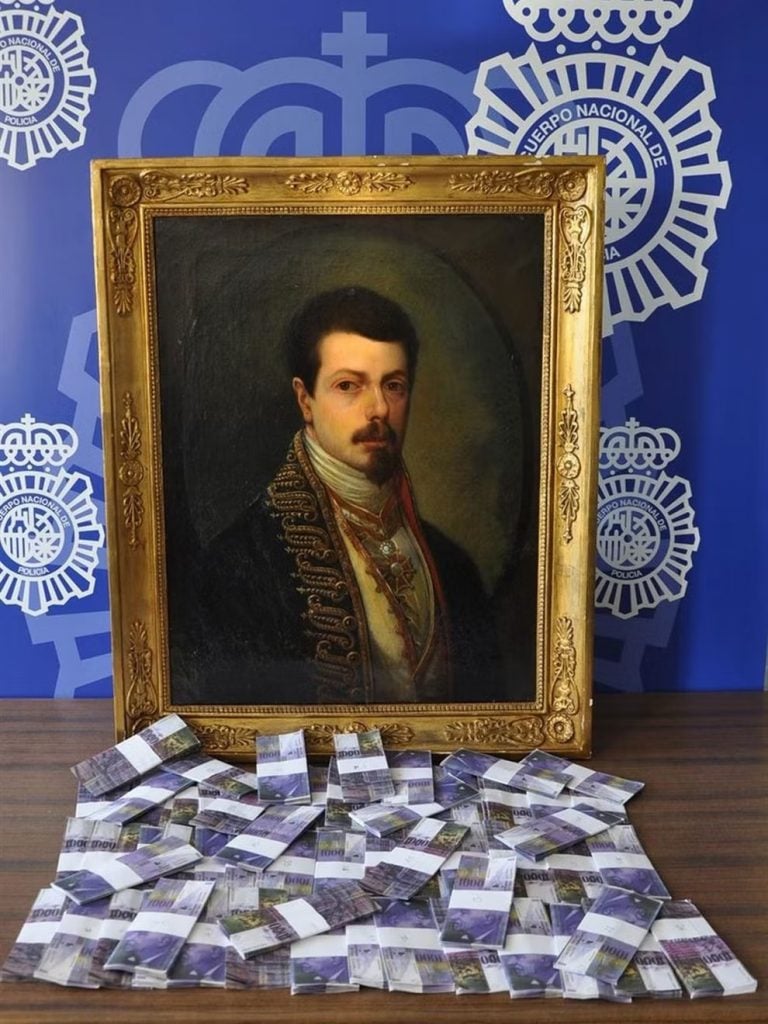Law & Politics
Police Arrest Brothers Who Sold a Fake Goya … and Were Paid with Fake Cash
Meet the "Dumb and Dumber" of art crime.

Meet the "Dumb and Dumber" of art crime.

Lorena Muñoz-Alonso

Spanish Police have arrested two brothers from Girona, Spain, who attempted to sell a fake Francisco de Goya painting to a purported sheikh, EFE reports. But the “sheikh” was no victim: he paid the pair with photocopied money.
The con artists realized they had been tricked when they tried to deposit 1.7 million Swiss francs (€1.5 million) in a Geneva bank and were told that the banknotes were mere photocopies, according to El País.
Spanish police officers found out about the scam in December 2014, when the Avignon customs warned them that they had intercepted two Spanish brothers trying to smuggle 1.7 million fake Swiss francs.
The sheikh had purportedly agreed to pay a total of €4 million for the Goya painting, entitled Portrait of don Antonio María Esquivel. The first batch of cash was to be collected in Turin, and was delivered by a middleman from the prince’s entourage. Apparently, the brothers verified the cash was legit with a machine, but the middleman managed to switch it before they left for Switzerland.
Adding Insult to Injury
The brothers had also given a €300,000 premium to the middleman who had introduced them to the sheikh. In order to do so, they had asked a friend to lend them the money, promising to give it back the following day, with an extra €80,000.
But things did not pan out as expected. The sheikh and the middleman, carrying the €300,000, have gone underground and their whereabouts are currently unknown. Meanwhile, the fake Goya painting—which was found in one of the brothers’ houses upon their arrest—is currently being held by police.
The shambolic art swindle began back in 2003, when the brothers first agreed to buy the Goya painting for €270,000, convinced it was the real deal.
They only paid a deposit of €20,000, however, as the transaction was halted due to the painting’s lack of a certificate of authenticity. In 2006, a Goya expert hired by the Girona Provincial Court deemed that the painting was a fake, done by a Goya contemporary rather than the Spanish master himself. The expert cited a key element that had allowed him to establish its fake provenance: the forger had forgotten to paint a specific medal of honor on the subject’s chest, clearly visible in the original.
The Provincial Court thus let the brothers keep the fake and relieved them of having to pay the standing amount, €250,000. Knowing they owned a fake, they started to look for someone to sell it to, just as they had been conned themselves. Little did they know they were soon to meet their match.
Goya paintings have been in the news—see Unknown Goya Self-Portrait Discovered Languishing in French Museum and Spanish Politicians Busted for Money Laundering Involving Goya Paintings.